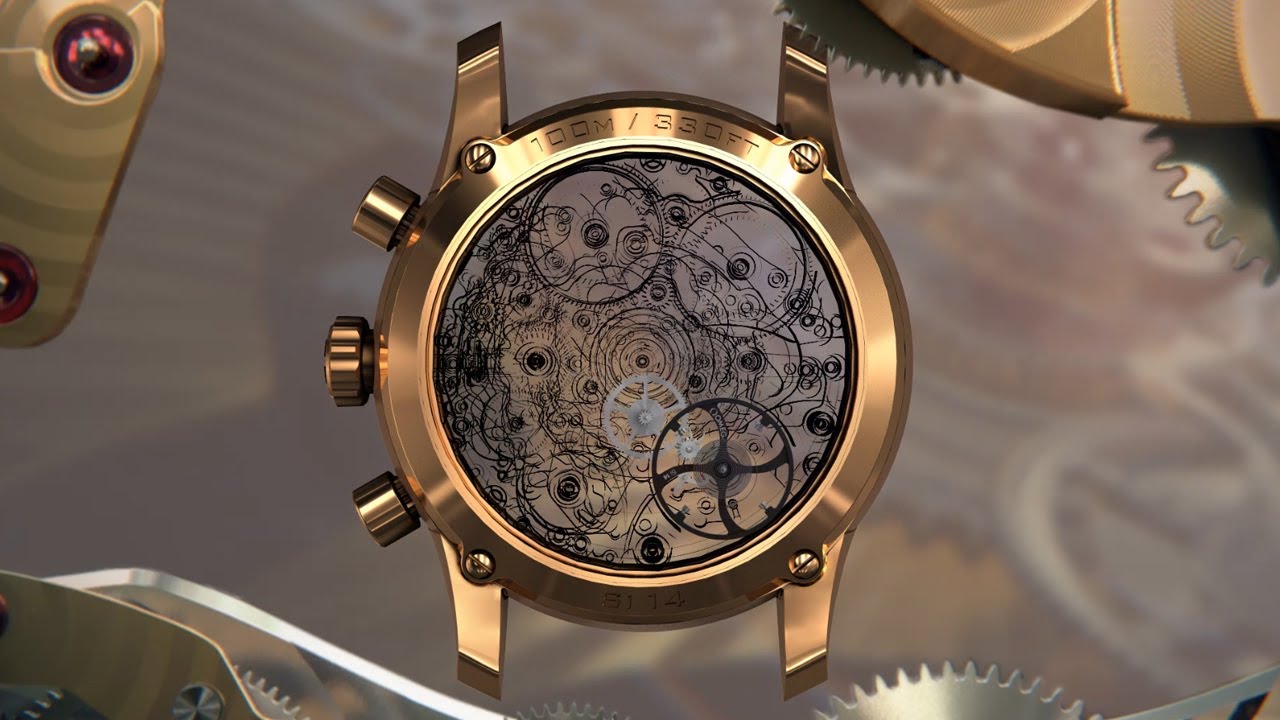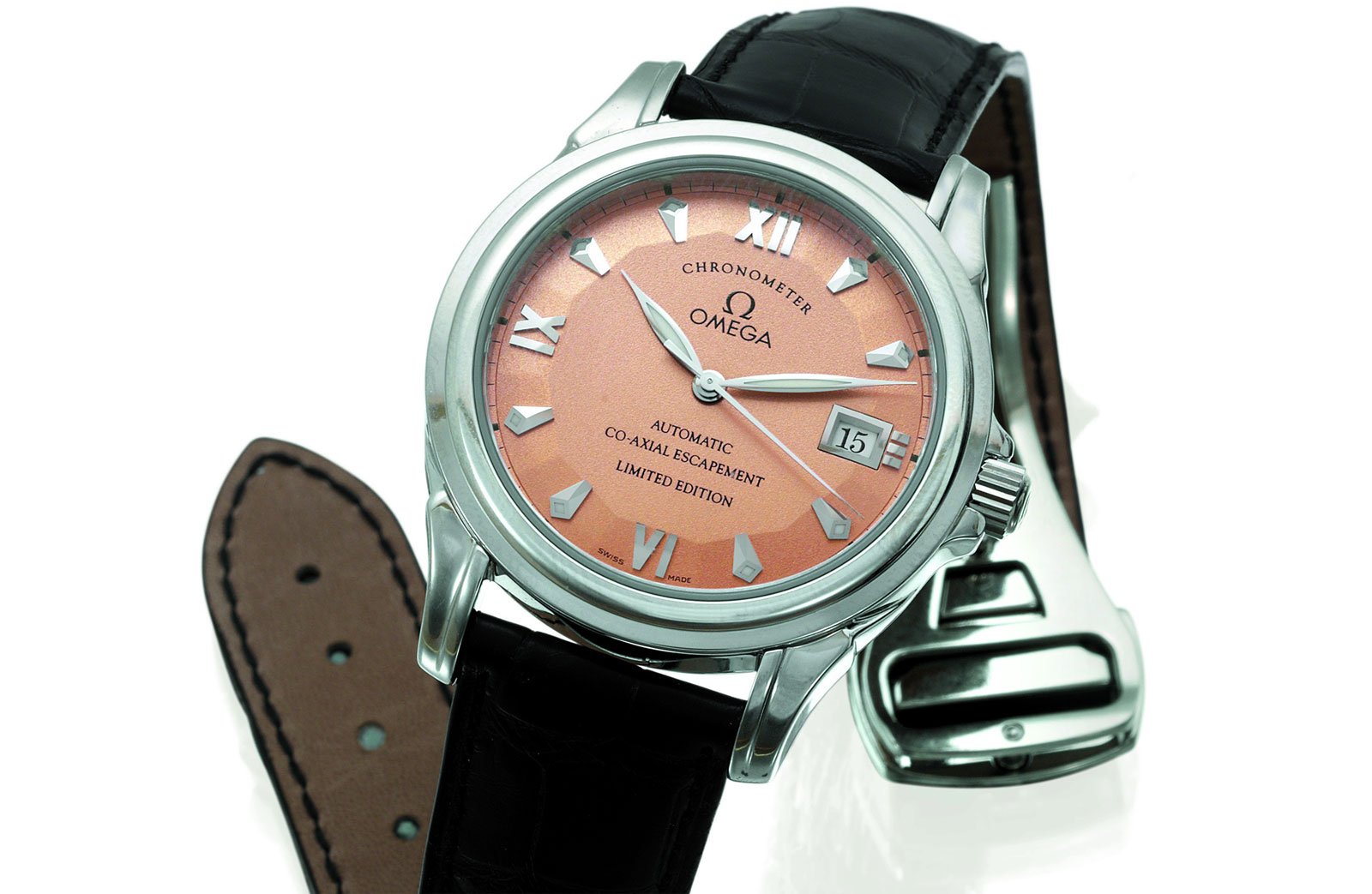Omega Explains the Co-Axial Escapement

Who doesn’t know about Omega’s co-axial escapement? I guess everyone who has an above average interest in (mechanical) watches has heard about the ‘co-axial escapement’. It’s been 14 years since Omega launched their first timepiece featuring the co-axial escapement that was invented (in 1974) and patented (in1980) by the English master watchmaker, George Daniels. Yes that’s the same George Daniels of the book we recommended yesterday.
In 1999, at the Baselworld watch fair, Omega announced a new watch for the DeVille line: chronometer rated and it was a limited edition. This DeVille was the first timepiece featuring the co-axial escapement that Omega they bought from George Daniels, and the movement was caliber 2500. This DeVille was limited to 1,000 pieces in yellow gold, 1,000 pieces in red gold and 100 pieces in platinum, like the one below (personally I’m crazy about watches with a salmon/copper dial).

The movement, Omega caliber 2500, is an ETA 2892 derivative that was supplied with the co-axial escapement and a free sprung balance. The co-axial escapement is considered by some, to be one of the most significant horological advancements since the invention of the lever escapement. It features a system of 3 pallets that separates the locking function from the impulse, avoiding the sliding friction of the lever escapement. This makes lubrication of the pallets unnecessary and thereby eliminates one of the shortcomings of the traditional lever escapement.
In their new campaign (see video above), Omega focusses strongly on the co-axial escapement and also showcases some of their highlights of the past decennia. There’s James Bond’s Aston Martin DB5, there are the Olympic athletes and of course the moon, reminding us of the first watch worn on the moon. I really like this video, however the following really helps to understand how the co-axial escapement works.
Any questions?



